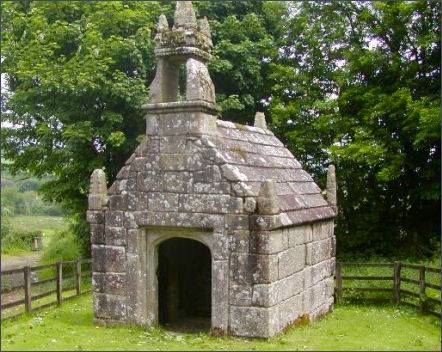Dupath Holy Well
OS Grid ref:- SX 374 693
 Dupath Holy Well, the largest and most impressive Well House in Cornwall, is situated just outside the town of Callington
Dupath Holy Well, the largest and most impressive Well House in Cornwall, is situated just outside the town of Callington
The granite well house is built over a natural spring and has a steeply-pitched corbelled roof. Weathered pinnacles are situated at each corner and a small bell turret, with a highly elaborate canopy, stands over the entrance.
Next to the well house stands a medieval, circular trough that collects the spring water. The small chapel-like building probably dates from 1510 and was built by the Augustinian canons of the nearby priory of St Germans, who once owned the site.
The well-house is typical of the late fifteenth and early sixteenth centuries and is in a notably 'Celtic' style bearing comparison with similar well houses and ancient chapels in Brittany and Ireland.
The spring at Dupath was believed to cure whooping cough, and it has been suggested that, in addition to its role in healing the sick, the spring may have been used on occasion for baptisms.
Like many such sites in Cornwall, this was almost certainly a pre-Christian shrine, christianised in the mediaeval period. Although the cult of holy wells was condemned at the time of the Reformation in the mid sixteenth century, local reverence for them and folklore customs continued, in some cases to the present day.
A legend associated with Dupath recounts that two Saxons - Colan, a poor knight who the lady loved and Gottlieb, a wealthy gentleman who was the preferred choice of the lady's father, fought a duel there for a lady's hand. But the maiden went unmarried: Colan was killed outright and Gottlieb fatally wounded.